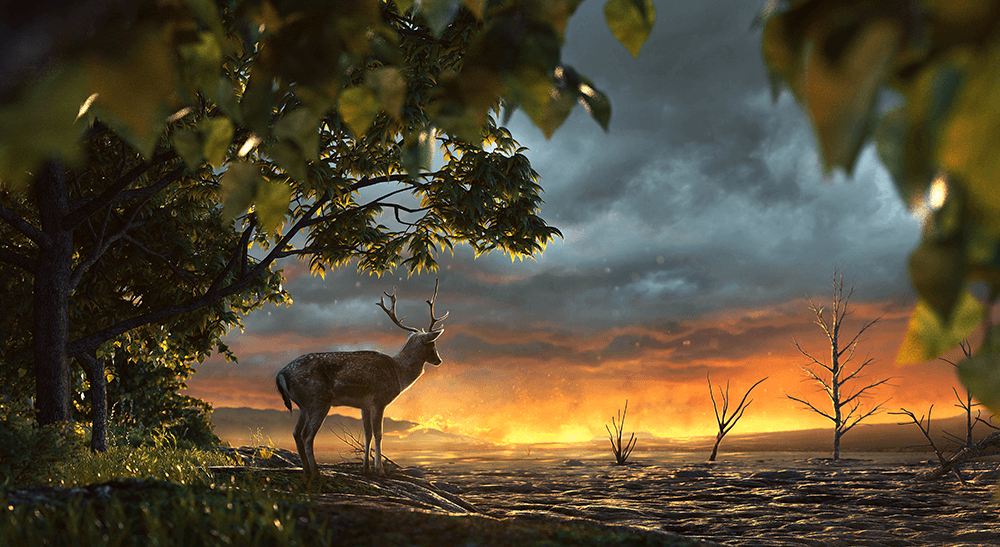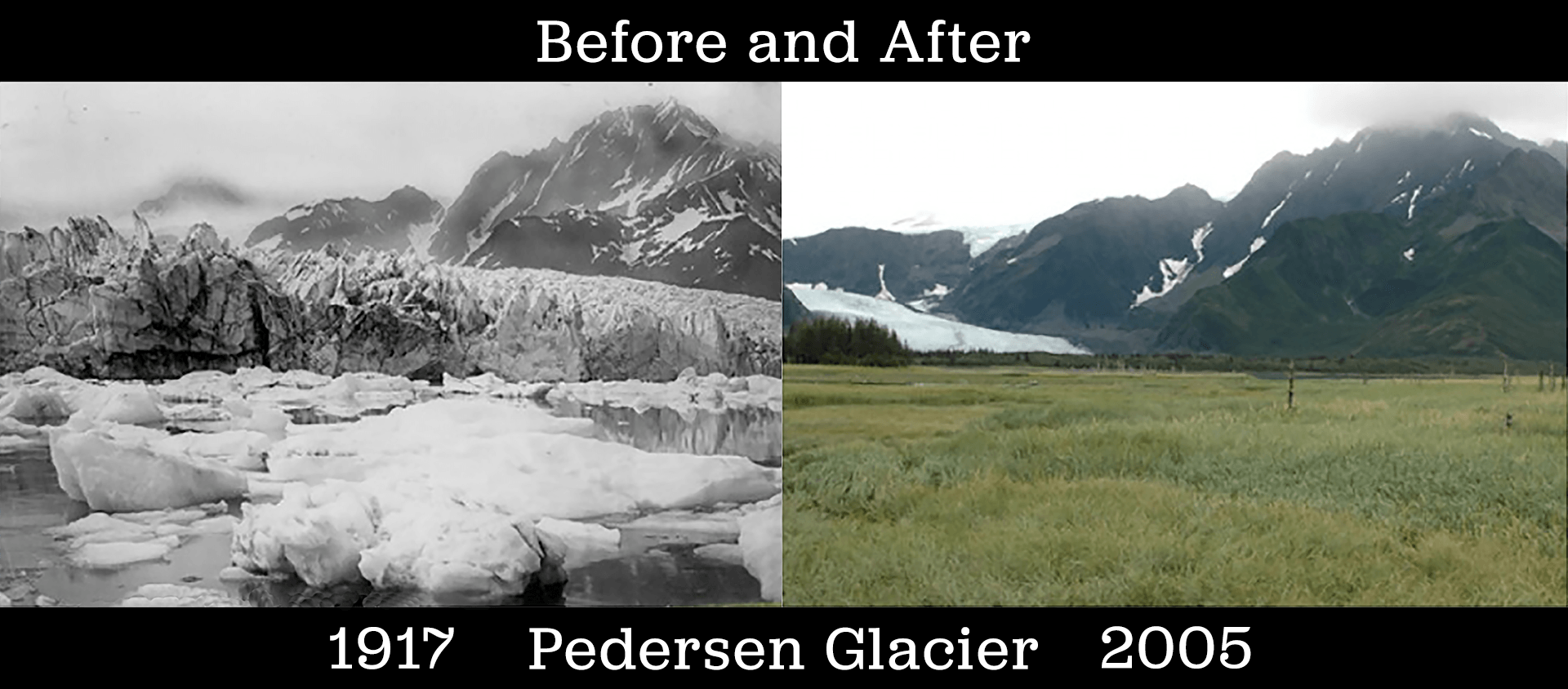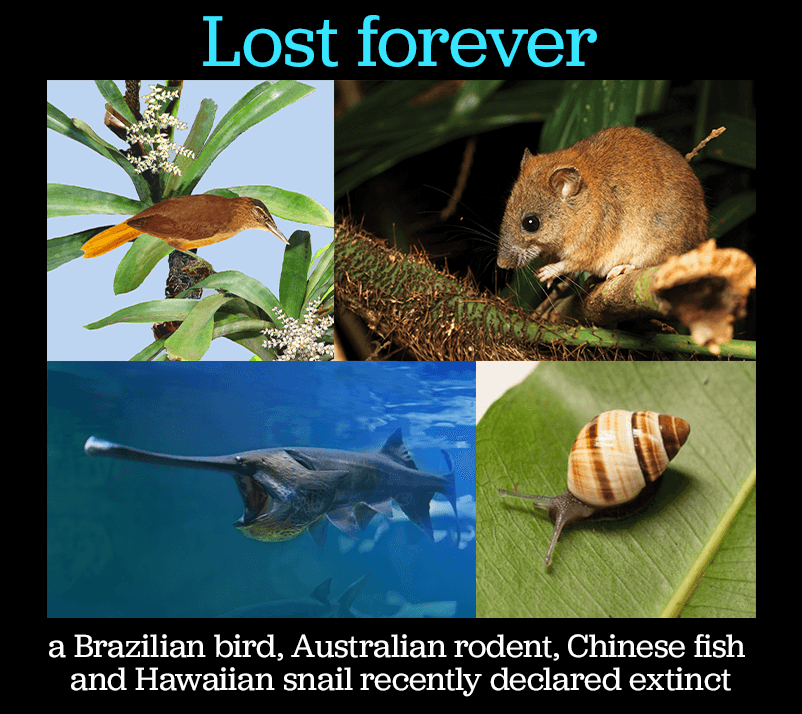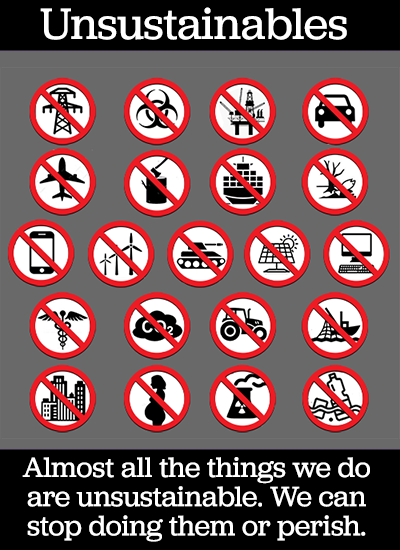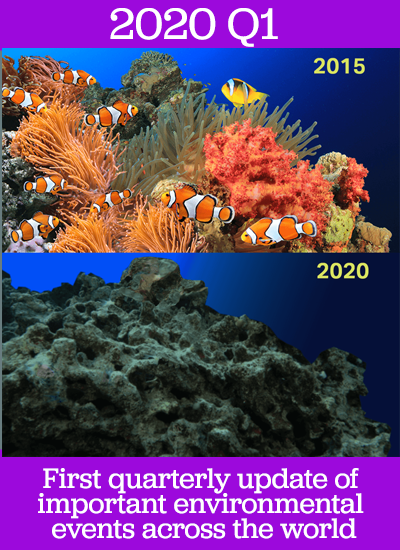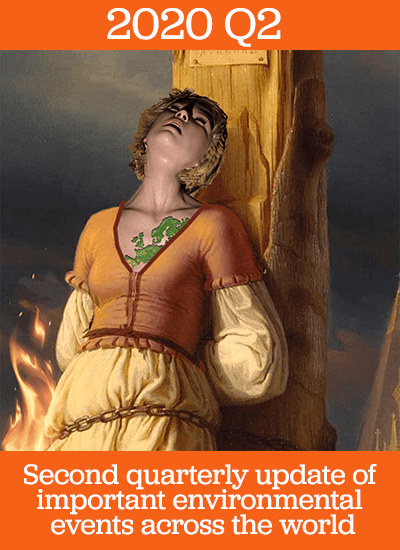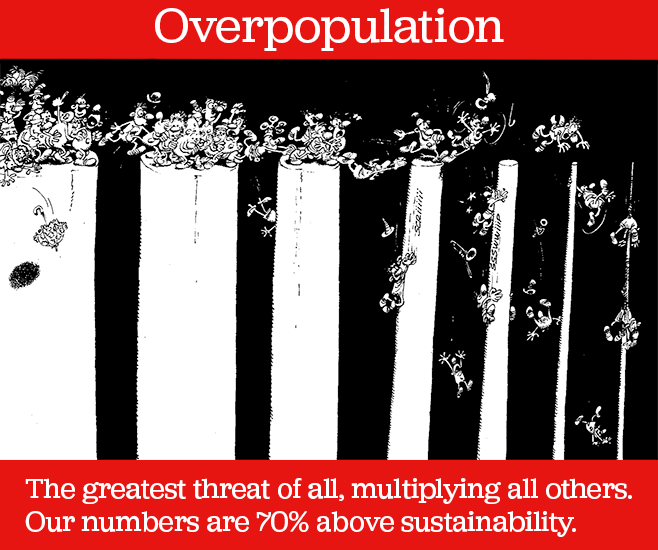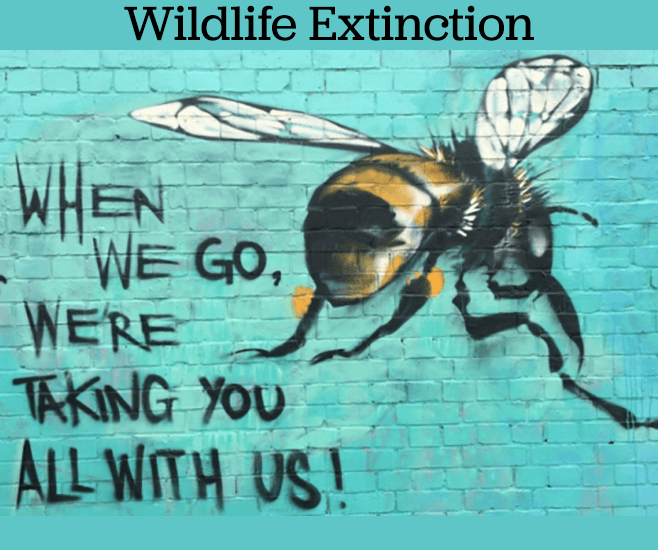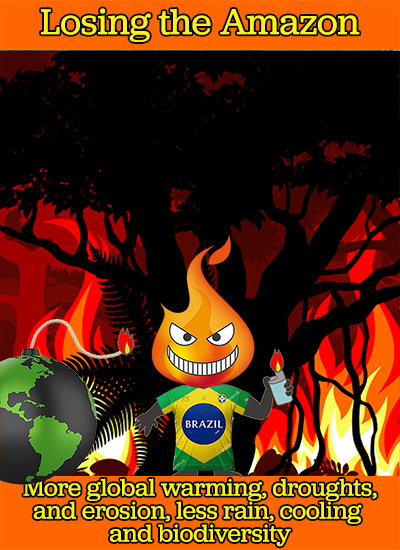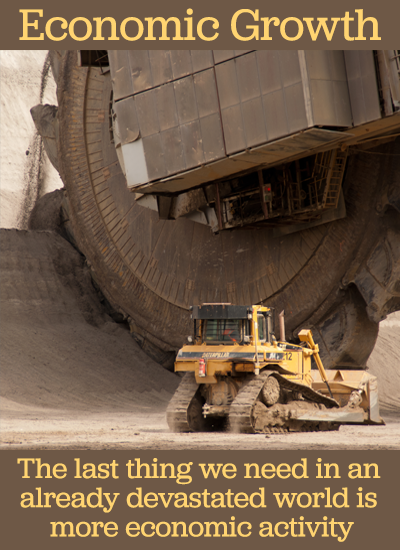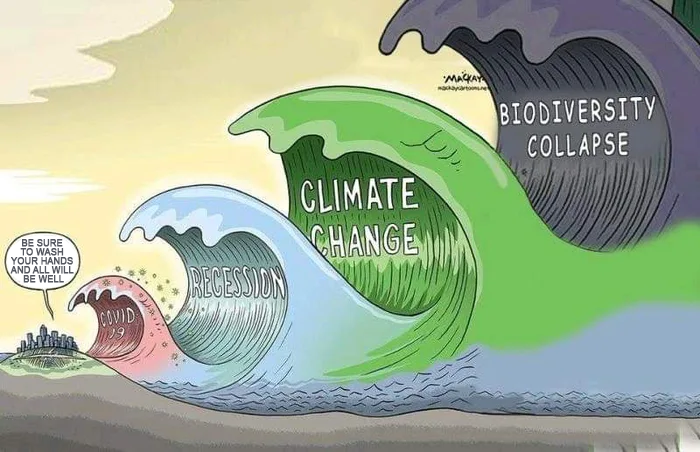2020 Q3: Worse again
Global warming
is showing no signs of slowing down. After the previous months had been either the hottest or the second hottest months in recorded history, the third quarter presented the same picture.
- July 2020 was the hottest July on record
- August 2020 was the second hottest August on record (behind 2016)
- September 2020 was the hottest September on record
The gravity of this development cannot be exaggerated. Even if we cut all greenhouse gas emissions today, it will take decades for the climate to return to normal (assuming that this is still possible). The longer we wait, the harder this will become, while the death toll will quickly run into many millions, which will disrupt society so badly that meaningful action will be well-nigh impossible.
The most visible signs of rising temperatures are the terrible, unprecedented wildfires blazing all across the globe, destroying huge tracts of nature, killing billions of animals, producing greenhouse gases and destroying large quantities of carbon sinks to create a vicious circle of accelerating global warming. These are no longer isolated events of apocalyptic ferocity but the beginning of a global apocalypse.
Some figures for 2020, at the end of the third quarter, bearing in mind that in many places the fire season has only just started
Wildfires
| Russia |
14 million hectares |
| Australia |
11 million hectares |
| US West Coast |
3 million hectares |
| Pantanal wetlands |
2.4 million hectares |
| Amazon |
1 million hectares |
Another dire consequence of rising temperatures is the melting of ice all over the world, especially in the polar regions. In our update for Q2 we already dealt with the extremely ominous thawing of permafrost in the arctic. Q3 produced more alarming reports about the melting of glaciers, ice sheets and sea ice in the polar regions. This further increases global warming, causes rising sea levels and changes in ocean currents, which could have enormous effects on the global climate and marine life.
Mountain glaciers are also shrinking and disappearing all over the world. Their loss is a serious threat to ecological and human water supplies in many countries. The Himalayan glaciers, for instance, are of vital importance to about 2 billion people.
Mass extinction
Early September the WWF published its Living Planet Report 2020. It revealed that the population sizes of mammals, birds, fish, amphibians and reptiles have dropped by 68% since 1970. The enormity of that fact speaks for itself.
The above-mentioned wildfires are also taking a massive toll of wildlife. In Australia the latest estimate is that about 3 billion animals were killed or displaced (which is very much the same because they have nowhere else to go). As the total area destroyed so far is about three times as big, the number of animals killed may well be three times as big, too.
This emphasizes once again that we are in the midst of a genuine apocalypse. Our world is dying. The notion that it "only" concerns animals is not just despicable, it is also suicidally stupid. We cannot do without animals and the ecosystems they sustain.
Biodiversity
Naturally the loss of biodiversity is an inevitable consequence of animal and plant extinctions. Although it may not seem as sensational as climate change, it poses an even greater threat to our world and ourselves. By destroying biodiversity, we are destroying the very fabric of life.
It appeared that humanity also realized this when 10 years ago - at the UN Convention on Biological Biodiversity - 200 countries agreed on a 10-year plan, setting 20 so-called Aichi Biodiversity Targets for 2020, to preserve the world's flora and fauna.
In September of this year a new UN report revealed that
none of the targets has been met.
And this failure does not stand alone. Again and again attempts to protect the environment are foiled by the unwillingness of countries to take any meaningful action, witness the failure of nearly all signatories of the feeble Paris Agreement to do something as simple as submitting "upgraded climate plans" in February of this year.
Plastic waste
As predicted by us in Q2 face masks are becoming a huge environmental problem. An estimated 194 billion disposable masks and gloves are being used worldwide every month. They cannot be recycled because they are considered medical waste and will end up in the oceans, where they may take up to 450 years to fully decompose, be dumped in landfills or be incinerated to produce toxic fumes.
Overpopulation
This catalyst of all our other problems keeps on growing. In the first 9 months of 2020 another 60 million people, or roughly the population of Italy or more than twice the population of Texas, were added.
Deforestation
After more than 10,000 square miles of Brazilian rainforest were lost in 2019, this year threatens to become even worse. According to official figures deforestation in the Brazilian Amazon increased by a record 25% during the first half of 2020.
CO2
Concentrations of this major greenhouse gas continued their build-up in the atmosphere:
- July 2020 vs 2019: 414.38 vs 411.74
- August 2020 vs 2019: 412.55 vs 409.95
- September 2020 vs 2019: 411.29 v 408.54
China
Utterances by Chinese officials must always be treated with the utmost skepticism, because the main reason for everything they say is propaganda, which is the essence of the regime's stranglehold on its population.
In September Xi Jinping delivered a speech at the UN, in which he said:
“We aim to have CO2 emissions peak before 2030 and achieve carbon neutrality before 2060,”
Given China's atrocious environmental record this should have been dismissed as mere propaganda (especially because no details were given on how this miracle is going to be achieved), but instead the rest of the world reacted with delight and praise on all sides, almost anointing China as the environmental savior of mankind.
That is dangerous nonsense.
What the Chinese are
aiming at means nothing. The only thing that matters is what they are
doing. And that is very little, obviously, in the coming decade. What they aim at doing forty years on is even less relevant. China may very well no longer exist by then because, in spite of its size, it is very vulnerable to climate change. It cannot feed itself or fill its own energy needs. It is also one of the countries seriously threatened by melting glaciers. All this will have dire consequences once climate change starts breaking down global infrastructures. That is also why China is so desperately trying to get footholds in other countries with its environmentally disastrous belt & road initiative and growing influence in Africa.
Perhaps a few reminders are in order:
- China has been the world's largest greenhouse gas emitter for more than a decade and is still going strong.
- After a worldwide ban on substances that harmed the ozone layer, it was China that allowed them to make a comeback a few years ago.
- It is one of the world's greatest threats to wildlife, driving many species into extinction as a market for poachers all across the world.
- It is a major cause of deforestation as it imports large quantities of illegal timber.
- It's the world's largest producer of plastic waste.
- Its belt and road initiative is causing enormous environmental harm in all the countries that it touches.
- It is building large infrastructural & industrial projects in Africa that harm the environment and enslave the countries with huge amounts of debt.
- Its fishing fleets are depleting the oceans. In September an armada of 266 ships travelled 15,000 kilometres to plunder the sea near the Galapagos Islands. The fact that they traveled so far says a lot about the depleted state of the waters nearer to the Chinese mainland.
And that's only the environmental side. Its record on human and animal rights is just as bad.
And then there was the virus
Throughout Q3 the madness continued. In saner times the normal reaction to disasters has always been to stay calm and composed, to act sensibly and appoint strong and capable leaders who were able to make difficult but necessary decisions and inspire everyone to bravely weather the storm.
Now we are urged by authorities and media to remain in a state of panic, to give free rein to our most primitive emotions, spurn common sense and preferably hide under a bed until the big bad virus has gone away.
Far too much attention was already been wasted on this event. But we want to point out two very important facts.
- The virus is by no means as deadly as it is made out to be.
At first fatality rates between 2 and 3% were mentioned. At present (late November) the death toll stands at 1.4 million. The number of infections is uncertain because many go unnoticed because victims have no or very mild symptoms (which in itself says a lot about the malignancy of the disease). The number of "cases" is therefore many times more than the official number. The WHO itself estimates that 10% of the world population may be infected, being 780 million. That would make the fatality rate 0.18%. Among infectious diseases this is extremely low.
It is even lower for healthy people under 65, because most deaths involve people above 65 and younger victims with underlying conditions.
In plain English, healthy people under 65 run a very small risk of dying from Covid-19.
- This relatively harmless virus could only become deadly because humanity has artificially created large groups of vulnerable people, who would not have survived under more natural conditions. That is also why countries with less excessive healthcare have fared much better.
By rejecting survival of the fittest and embracing survival of the unfit, we have not only caused a population explosion that threatens the existence of the natural world but we have also created an enormous number of vulnerable people, old, obese and sick, who are an easy prey for even the mildest of diseases. Covid 19 is mild. Its death rate is among the lowest on the list of infectious diseases on Wikipedia. It is not hard to imagine what will happen when a really malignant disease appears.
Final thoughts
The inmates have taken over the asylum. While the environmental crisis deepens and threatens all life on earth, humanity has decided to devote its time and resources to a disease that offers no existential threat whatsoever. Nine months have already been wasted without any meaningful action to combat climate change. It proves beyond any reasonable doubt that humanity is no longer able to get its priorities right. It means that we will keep on sleepwalking into our own ruin. All that is left is to prepare ourselves for the worst. Our civilization is about to end
"The warnings about global warming have been extremely clear for a long time. We are facing a global climate crisis. It is deepening. We are entering a period of consequences."
Al Gore

